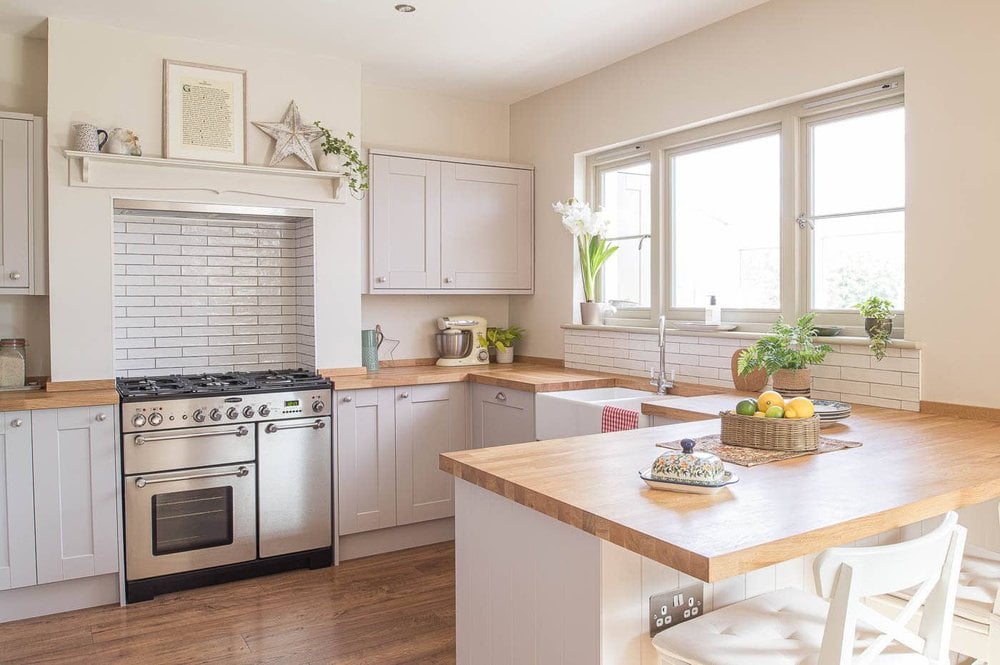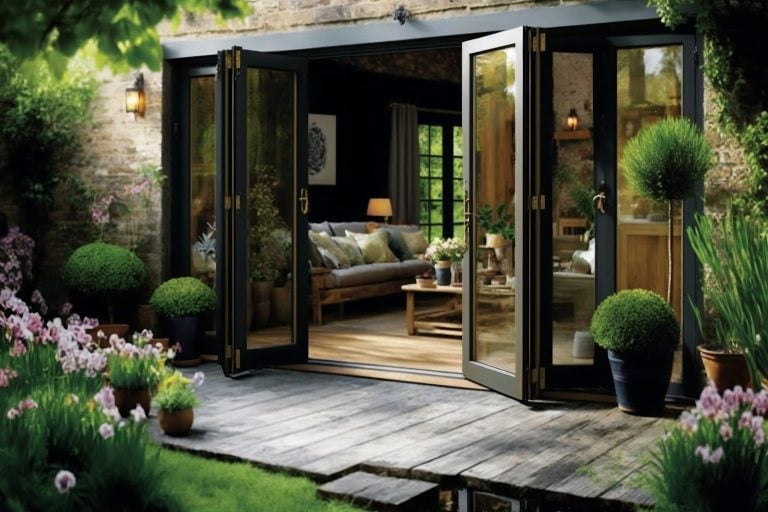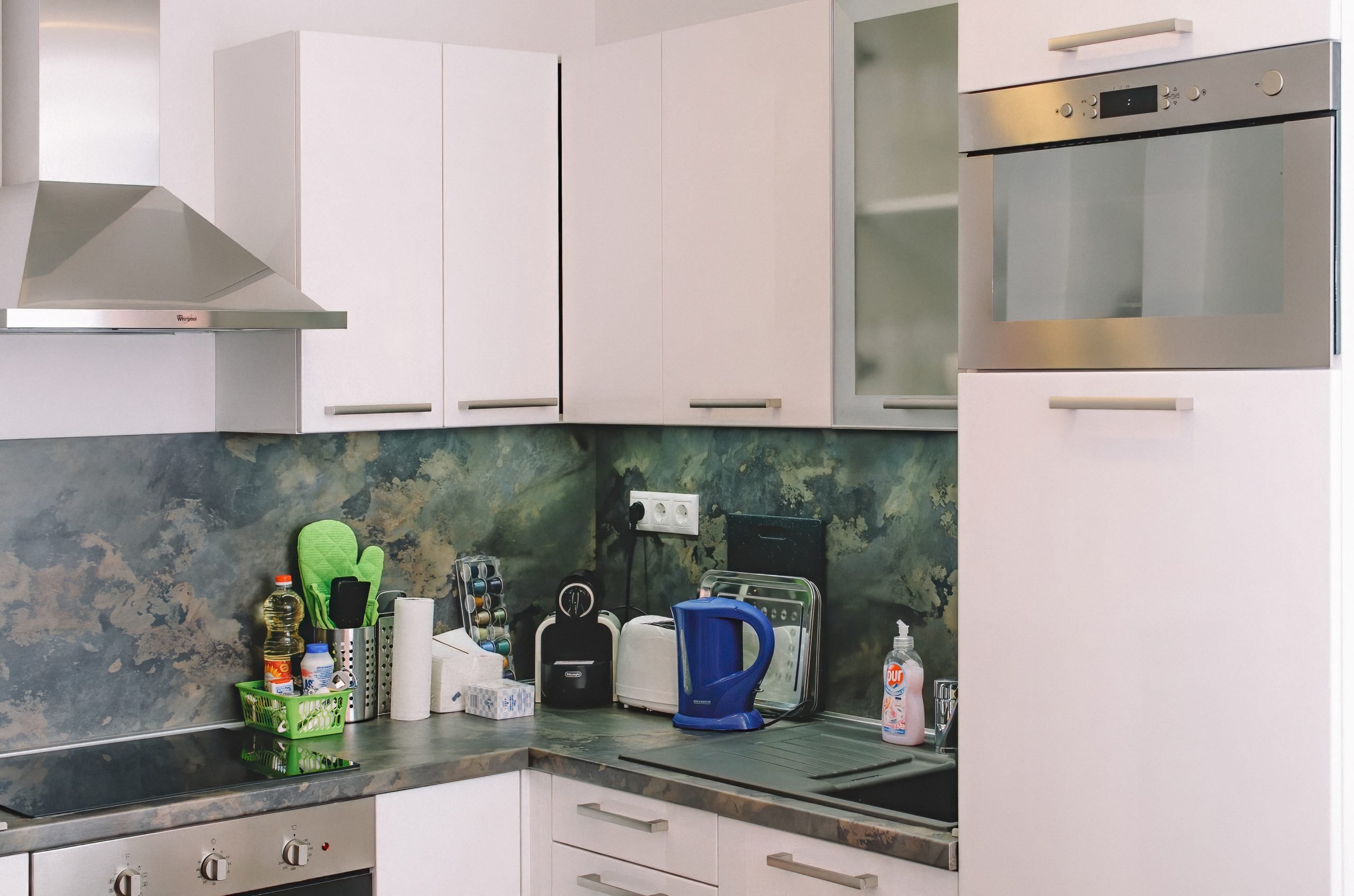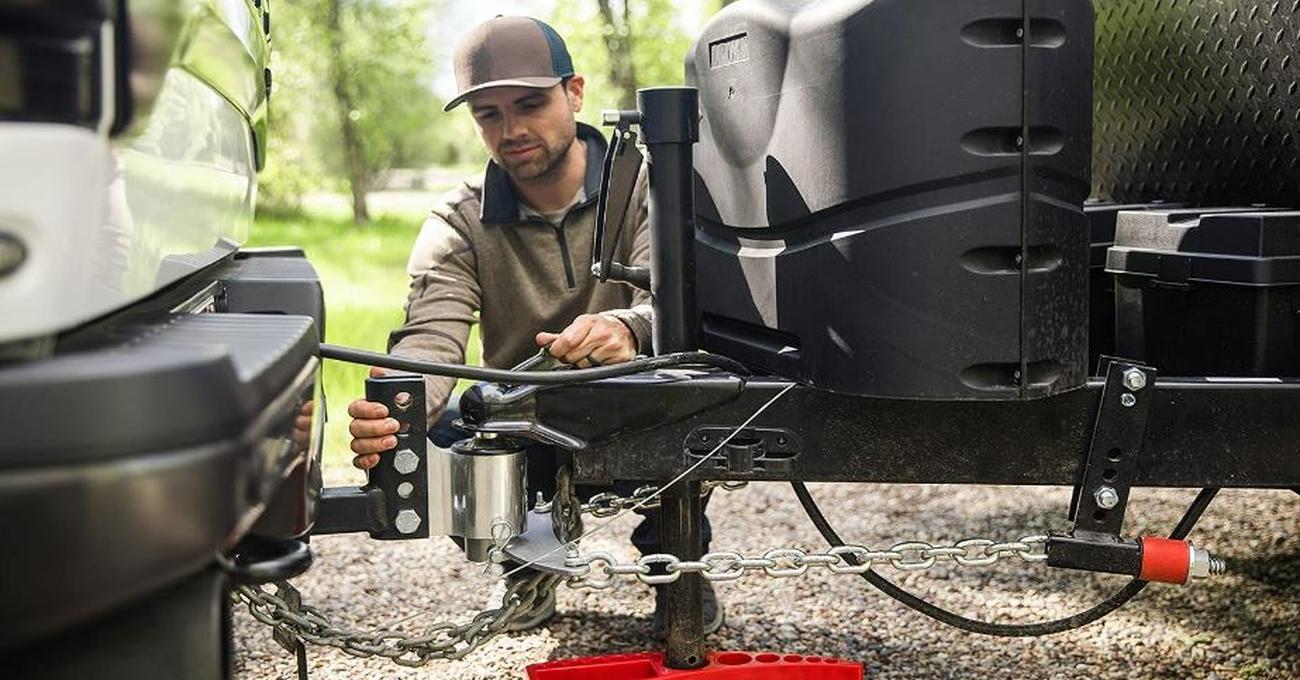The Enduring Appeal of Wooden Garage Doors: A Guide to Style, Security, and Functionality
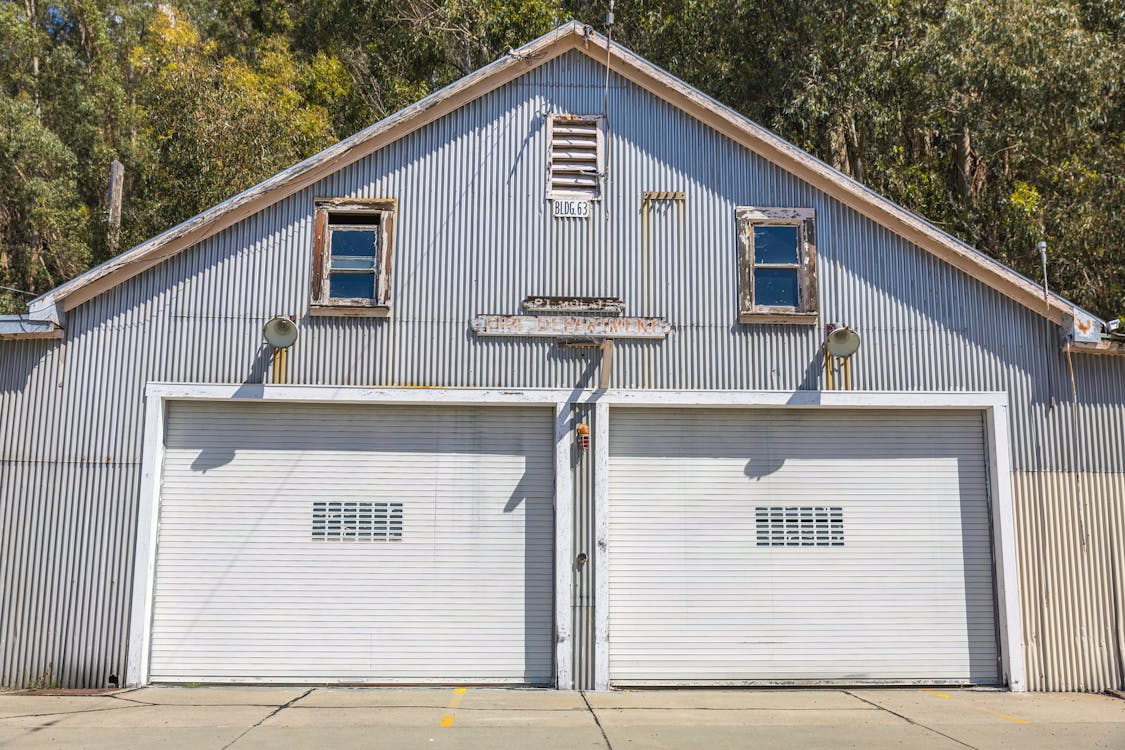
Table of Contents
Wooden garage doors never go out of style thanks to their classic warmth, customization potential, energy savings capabilities, and long lifespan. As a focal aspect of exterior façades, wood construction welcomes owners and guests with natural rustic beauty unmatched by industrial aluminum or steel options.
Top Reasons Homeowners Choose Wood
 Several inherent perks explain wood’s enduring popularity spanning generations as garage door material of choice:
Several inherent perks explain wood’s enduring popularity spanning generations as garage door material of choice:
Organic Visual Appeal
Knots, grains, and rich tones expose wood’s authentic origins from forests rather than factories. Their innate legacy bears witness to natural growing seasons evoking cozy cabin character that manufactured materials can’t replicate convincingly, no matter how cleverly engineered the imitation.
Built to Last
Adequately maintained, high-density wooden garage doors stand the test of time thanks to sturdy structural integrity, keeping operations smooth for 20-30 years. Value construction utilizes finger-jointed edge gluing, maximizing timber usability.
Energy Efficiency
Wood’s natural insulating properties, including slow heat and cold transfer, are far better than those of metal alternatives. This reduces demands on interior climate control systems, contributing to cost savings, especially beneficial in garages frequently occupied as hobby workshops.
Customization Ability
From selecting unique regional wood species to adding decorative window cutouts or custom hardware finishes matching interior elements, wood doors invite personalized articulation possibilities that combine beautiful curb appeal, security, and functionality.
Eco-Friendly Sourcing
Responsible wood sourcing policies ensure that new-growth forests are planted in place of harvested mature trees so habitats remain sustainable for future generations to enjoy renewable woody aesthetics respectfully and sustainably.
Types of Wooden Garage Doors
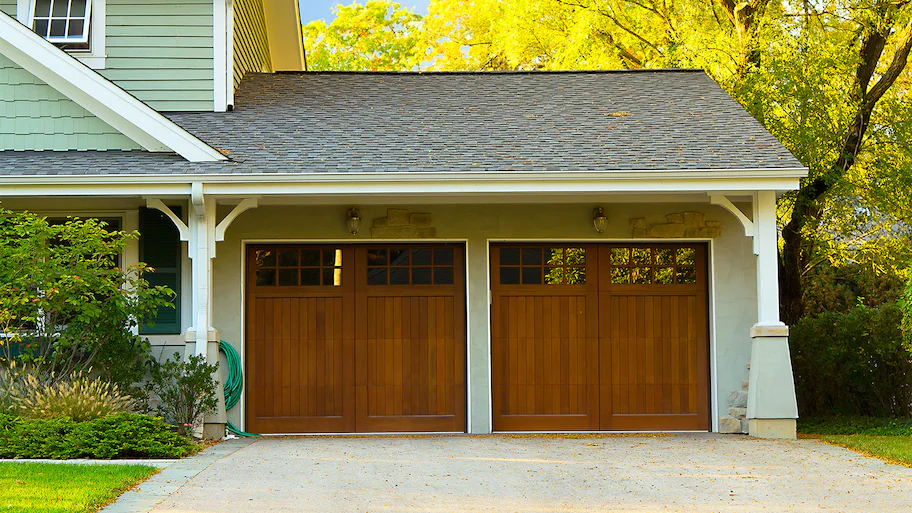
Different kinds of wooden garage doors come in an array of operating mechanisms and opening directions, solving various home layout constraints:
Swing-Out Garage Doors
Like exterior hinged entry doors, these side-hinged single-vehicle wooden garage doors save interior space by swinging outward rather than lifting upwards or rolling backward before flipping horizontally.
Up and Over Wooden Garage Doors
Also known as “tilt doors,” these vertically hinged wooden panels attached along top edges gently pivot upwards from their middle upon lifting before receding into opened overhead positions parallel to the ceiling without demanding added side clearance.
Sectional Wooden Garage Doors
For full-width openings without space-consuming side tracks, these wooden doors come constructed of multiple horizontally hinged slatted planks that collapse accordion-style on spring-loaded tracks, offering one-piece lift flexibility in tight proximity carports and detached garages.
Lateral Sliding Wooden Doors
Rather than swinging or lifting, these wood doors seamlessly coast left or right on wall-mounted tracks, so once pulled fully open alongside facades, no porch, yard space, or car aprons are occupied. Their gliding operation keeps interiors spaciously accessible, too.
Finding Your Matching Design and Material
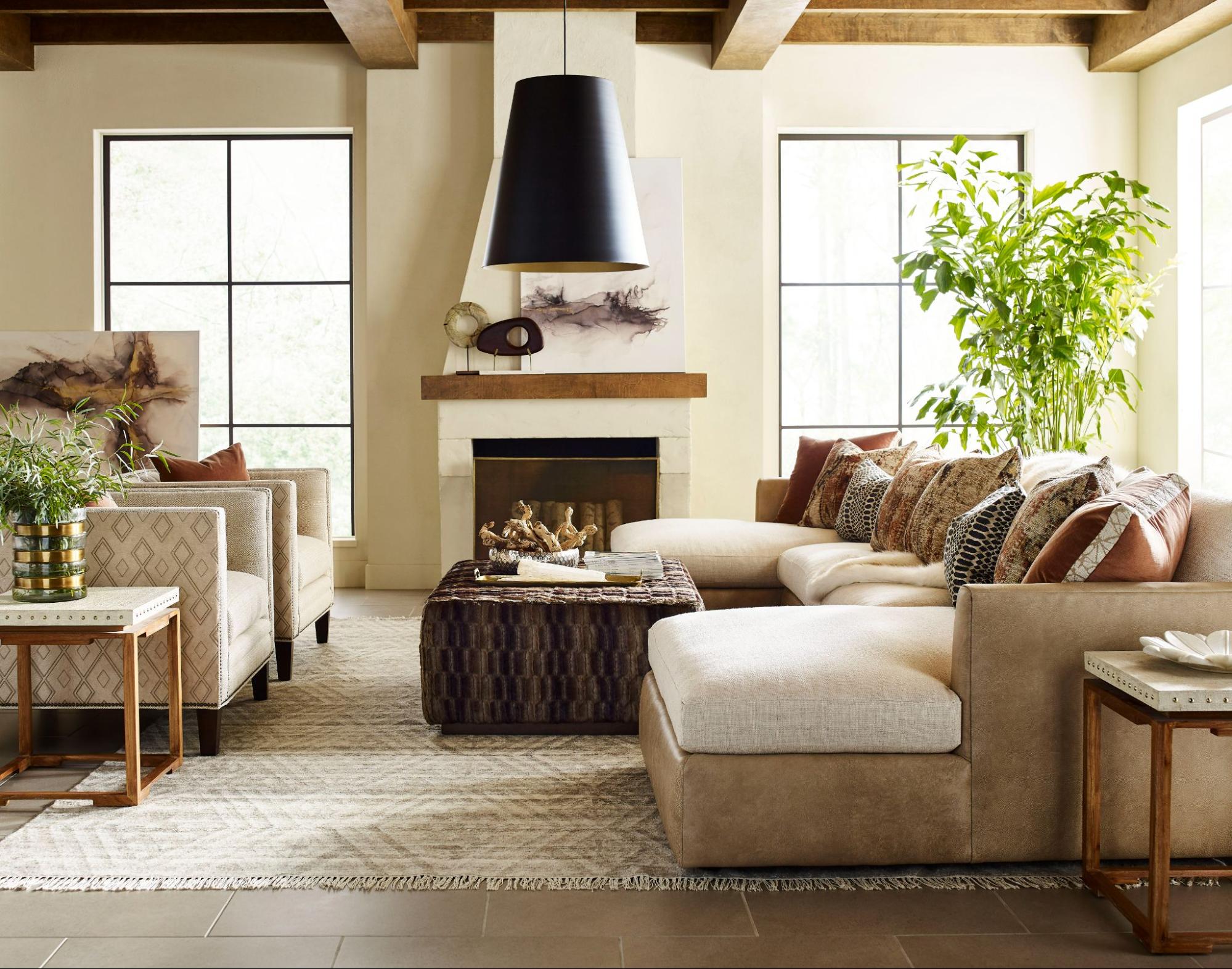 When seeking wood doors to strike the ideal balance blending into home architecture without falling flat, consider these design factors:
When seeking wood doors to strike the ideal balance blending into home architecture without falling flat, consider these design factors:
Match Architectural Personality
For Craftsman bungalows, paneled Mission-style doors with square cutout accents complement clean lines. Mediterranean villas welcome mesquite or oak-grained doors with wrought iron handles in arched frames. Beach cottages keep things casual with sun-bleached cedar planks paired with whitewashed trims.
Factor Functional Usage
Beyond housing vehicle fleets, determine usage plans by assessing indoor recreational demands, storage needs, or hobby workshop considerations, guiding layouts, and specialty feature accommodations like insulation or storage lofts.
Account for Ongoing Care Commitments
While rich woods like oak, mahogany, or teak deliver durable water resistance and enviable grains for decades if routinely maintained, lower-maintenance engineered woods or pre-finished composite alternatives emulate aesthetic essence without fussy upkeep obligations if home aesthetics outweigh authentic materials purism.
Mind Regional Climate Impacts
Climate humidity directly affects real wood doors, so swapping out steel panels for raw, unfinished planks in damp tropical zones or coastal settings demands careful consideration regarding the species’ durability and finishing requirements. These requirements defend against insects, warping cracks, and perpetual refinishing needs.
Stick to Budgetary Limits
Custom ornate solid tropical hardwood doors convey upscale elegance and tag upper-echelon price points requiring substantial financial investment that premium composite or steel alternatives emulate at more accommodating budgets through clever engineering tricks.
Choosing Durable Wood Species
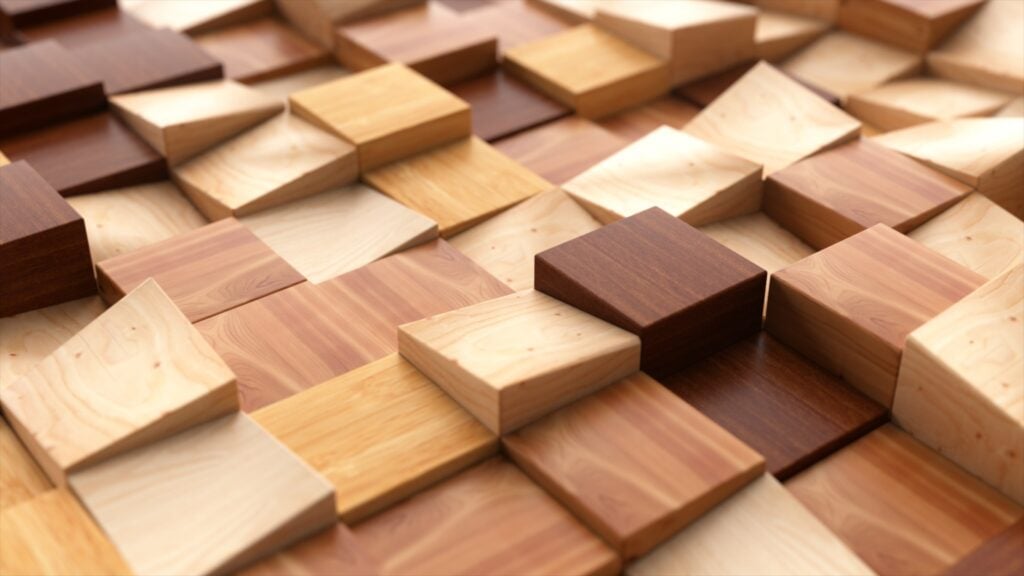 For wooden garage doors sustaining year-round exterior exposure across decades while retaining appealing visual qualities through storms and UV rays, particular wood species prove most optimal:
For wooden garage doors sustaining year-round exterior exposure across decades while retaining appealing visual qualities through storms and UV rays, particular wood species prove most optimal:
Western Red Cedar
This dimensionally stable softwood expands and contracts minimally despite climate fluctuations, allowing it to better avoid cracked warping and shearing. Natural color variations from reddish-brown heartwood to golden near-white sapwood convey rustic character for informal abodes.
Redwood
Sharing cedar’s climate change resilience, straight-grained reddish redwood looks fantastic stained or left naturally silver, acquiring a coveted patina over aging. It serves finer country manors and chateaus, accepting the significant sum premium.
Hemlock
For value-driven alternatives to costly redwood and cedar, affordable hemlock offers moisture-resistant virtues ideal for high-humidity southeastern states, favoring this understated-yet-refined conifer blend nicely suited for painted finishes emulating pricier lumber without breaking budgets.
Treated Stock Pine
Another economical option welcomed in semi-enclosed carports covered from overhead sun and rain, properly preservative pressure-treated radiata or yellow pine boards resist insects and moisture saturation. They hold up respectably over years of use despite resin bleeding through painted finishes on super hot days, requiring occasional touch-ups.
Exotic Hardwoods
From old-world craftsman shops specializing in ornate solid mahogany or oak customs designs commanding five-figure price tags matching luxury digs to seemingly indestructible South American Cumaru planking boasting decade-plus lifespans in rough outdoor exposures, bespoke tropical hardwoods deliver resilient longevity and cherished heirloom charm for homes valuing world-class artisanal aesthetics.
Caring for Wooden Garage Doors
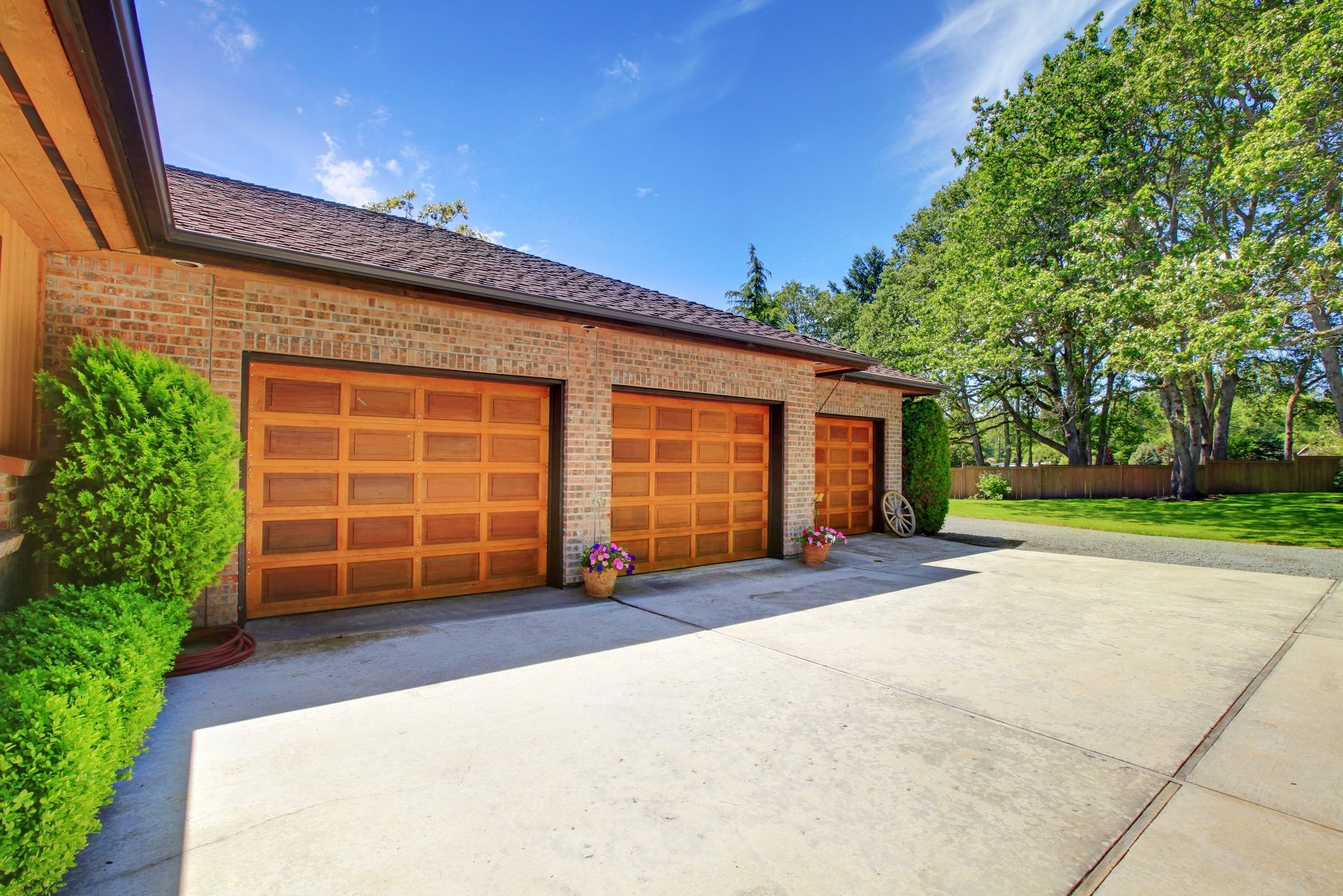 With periodic maintenance enhancing structural integrity and visual appeal, wooden garage doors provide reliable service life measured in decades:
With periodic maintenance enhancing structural integrity and visual appeal, wooden garage doors provide reliable service life measured in decades:
Gently Rinse Quarterly
Clear debris buildup can be achieved by occasionally hosing doors down and avoiding forceful pressure streams focused on hardware or wood joints. Let them drip dry in the sun to evaporate lingering moisture soon after washdowns naturally.
Vigilantly Spot Treat Any Algae Growth
In more humid environments, especially, periodically treat petri dish-prone expanses manifesting dark blotchy mold, moss, or algae with gentle natural enzyme-based cleaners to avoid invasive spread into bare grain pores and the need for deep chemical power washing strippings down the road.
Consider Refinishing Every 3-5 Years
Unless opting for factory composites, reseal UV damage, and refresh worn weather coatings before the telltale signs of faded pigments and exposed cracking, splintering grain pores emerge, compromising structural integrity through insisting upon proactive rustic aesthetic preservation passionate homeowners take seriously.
Repainting Wooden Doors
For painted wooden garage doors showing signs of exterior wear after a few years, proper refinishing steps include:
1. Lightly sand peeled or bubbled paint accessing intact lower foundation coats
2. Wipe clean all dust nibs and debris with tack cloth, followed by degreasing solvents
3. Allow to fully outgas any lingering fume odors before proceeding
4. Apply bonding primer communicating with sanded underlying surfaces
5. Finish with two sanded coats of latex enamel fortified for durability
Lubricate Moving Parts
Annually, grease hinges, hardware joints, and balance springs with non-drying lubricants prevent costly friction and grinding damage, necessitating premature replacements better averted through vigilant preventative maintenance.
Caulk Entry Points
Plug errant holes compromising weatherproofing integrity, allowing moisture or insect ingress to threaten structural stability. Dab commercial-grade exterior caulk to seal entry points across vulnerable thresholds, cracks, and unfinished gaps.
Conclusion
With the unmatched warmth and customization potential of available wood species and specialty design elements, homeowners seeking statement curb appeal welcoming guests while reliably housing automotive collections over the long haul should consider the easy maintenance merits of durable wooden garage doors tailored to home architecture.
Consult reputable carpentry contractor services guaranteeing operational integrity through material appraisals and conscientious installation practices, ensuring hand-crafted wooden doors satisfy desires for decades rather than disappointingly underdelivering their promise of enduring legacy prematurely.



